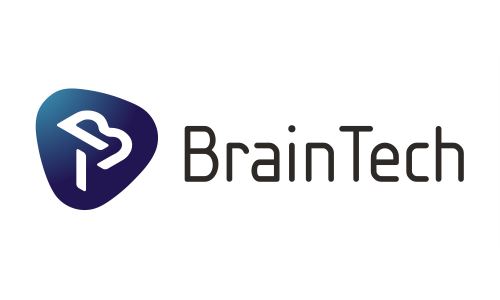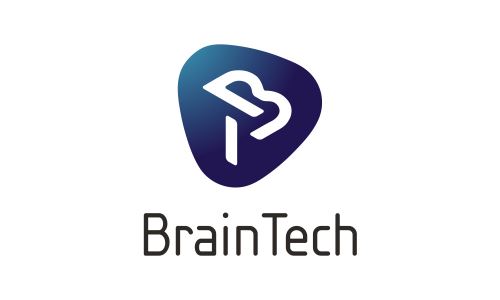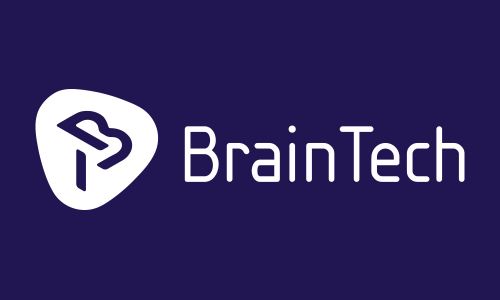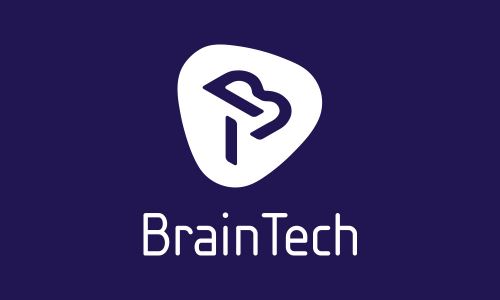
From R&D projects to technologies of the future
BrainTech is a company established by scientists, kicked off with the first demonstration of a brain-computer interface (BCI) in Poland in 2008 and the OpenBCI.pl, EEG.pl and Svarog projects. The company was set up in 2012. In 2015, we created the Polish Integrative System of Alternative Communication (PISAK). Since 2016, our software has been used in research of consciousness disturbances at the \„Alarm Clock Clinic\“. In 2016–2018, as part of the \„Brain-Computer Interface\“ project, we developed comprehensive EEG/BCI systems based on innovative equipment – from traditional EEG amplifiers, through a comfortable wireless headset, to one-of-a-kind \„Blinker\“ for high-frequency SSVEP; we also offer comprehensive software for research and educational purposes, practical implementations as well as consultations and specialist services regarding EEG/BCI.
HISTORY
2018.06
DECADE OF POLISH RESEARCH INTO BCI
The lecture entitled „10 years of Polish brain-computer interfaces: from university research to BrainTech“ delivered at the 27th Psychology Seminars, Toruń, June 2018.
2016.05
WIRELESS BCI HEADSET
BrainTech begins to implement the „Brain-Computer Interface“ project co-funded by the National Center for Research and Development that results in, among other things, a wireless BCI headset using water-based electrodes, which you can see in the video. Live demonstration during the lecture entitled „Recent advances in brain-computer interfaces from BrainTech.pl“ delivered at the XI Electrophysiological Conference.
2016.02
BEGINNING OF RESEARCH AT THE ALARM CLOCK CLINIC
The Faculty of Physics of the University of Warsaw commences research at the Alarm Clock Clinic as part of the project titled \„Brain-computer interface for diagnosis and communication in consciousness disturbances\“ based on BrainTech software.
2013.10
THE PISAK PROJECT
We begin the PISAK project – Polish Integrative System of Alternative Communication – that results in open and free software for the disabled with very few communication possibilities who can use some of their muscles (so not BCIs).
2013.03
„BRAIN“ INTERACTIVE EXHIBITION
During the „Brain“ interactive exhibition held at the Palace of Culture and Science in Warsaw, we showed how to easily senses can be fooled or even manipulated: people see and feel primarily with their minds, and mind bends the reality to its habits. BCIs were also present. 🙂
2012.05
FOUNDATION OF BRAINTECH
BCI technology is emerging from the best laboratories and finding its way to clinics, patients, multimedia and entertainment. BrainTech is established.
2012.03
THE FASTEST BCI AT CEBIT
Four years of extensive research have overcome decades of Poland staying behind in BCI. We’ve become one of the worldwide leaders by presenting the fastest brain-computer interface based on a unique device invented by prof. Piotr Durka at CeBIT2012 at the Polish official stand. Watch this uncut video of a test performed on a visitor and see for yourself how fast our BCI responds!
2008.06
THE FIRST PUBLIC DEMONSTRATION OF A BCI
The first public demonstration of a brain-computer interface in action is held in Poland; the Faculty of Physics at the University of Warsaw, research group under the supervision of prof. Piotr Durka. Watch the uncut video on the left to see the beginnings of Polish research into BCIs.
PUBLICATIONS
- Successful BCI communication via high‑frequency SSVEP or visual, audio or tactile P300 in 30 tested volunteers A. Chabuda, M. Dovgialo, A. Duszyk, A. Stróż, M. Pawlisz, and P. Durka. Acta Neurobiologiae Experimentalis 79(4): 421-431, DOI: 10.21307/ane‑2019‑039
- Assessment of statistically significant command following in pediatric patients with disorders of consciousness, based upon visual, auditory and tactile event- related potentials. M. Dovgialo, A. Chabuda, A. Duszyk, M. Zieleniewska, M. Pietrzak, P. Różański, and P. Durka. International Journal of Neural Systems, 29(3):1850048, Oct 2018
- Parametric Description of EEG Profiles for Assessment of Sleep Architecture in Disorders of Consciousness. M. Zieleniewska, A. Duszyk, P. Różański, M. Pietrzak, M. Bogotko, and P. Durka. International Journal of Neural Systems, 29(3):1850049, Oct 2018.
- Event-related potentials in the odd-ball paradigm and behavioral scales for the assessment of children and adolescents with disorders of consciousness: a proof of concept study. A. Duszyk, M. Dovgialo, M. Pietrzak, M. Zieleniewska, and P. Durka. The Clinical Neuropsychologist, pp. 1–19, Jan 2019
- Spindles in Svarog: framework and software for parametrization of EEG transients P. Durka, U. Malinowska, M. Zieleniewska, Ch. O’Reilly, P. Różański, J. Å»ygierewicz. Frontiers in Human Neuroscience, May 2015
- Electroencephalographic profiles for differentiation of disorders of consciousness U. Malinowska, C. Chatelle, M-A Bruno, Q. Noirhomme, S. Laureys, P. Durka BioMedical Engineering OnLine 2013, 12:109, Oct 2013
- Multivariate matching pursuit in optimal Gabor dictionaries: theory and software with interface for EEG/MEG via Svarog. R. Kuś, P.T. Różański and P.J. Durka. BioMedical Engineering OnLine 12:94, 2013
- On the Quantification of SSVEP Frequency Responses in Human EEG in Realistic BCI Conditions Kuś R, Duszyk A, Milanowski P, Åabęcki M, Bierzyńska M, Radzikowska Z, Michalska M, Å»ygierewicz J, Suffczyński P, Durka PJ. PLoS One 18;8(10):e77536 Oct 2013
- Towards an Optimization of Stimulus Parameters for Brain-Computer Interfaces Based on Steady State Visual Evoked Potentials A. Duszyk, M. Bierzyńska, Z. Radzikowska, P. Milanowski, R. Kuś, P. Suffczyński, M. Michalska, M. Åabęcki, P. Zwoliński, P. Durka. PLoS One 9(11): e112099, Nov 2014
- User-centered design of brain-computer interfaces: OpenBCI.pl and BCI Appliance P. J. Durka, R. Kuś, J. Å»ygierewicz, M. Michalska, P. Milanowski, M. Åabęcki, T. Spustek, D. Laszuk, A. Duszyk, M. Kruszyński. Bulletin of the Polish Academy of Sciences. Technical Sciences, vol. 60, No 3, pp. 427-433, Sept 2012
- SignalML: metaformat for description of biomedical time series P.J. Durka and D. Ircha, Computer Methods and Programs in Biomedicine Volume 76, Issue 3, pp. 253-259, Dec 2004
Download
LOGO AND BRAND BOOK
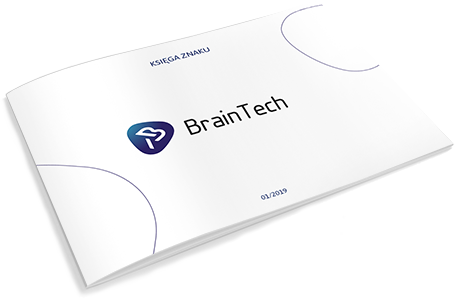
Brand book
Using the logo of BrainTech, always follow the guidelines and examples provided in the brand book. Pay particular attention to the safe area and minimum dimensions.

